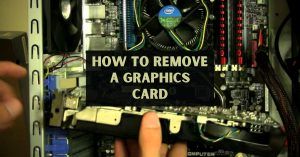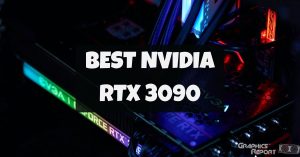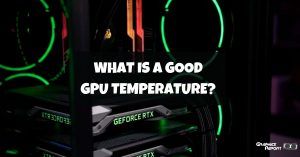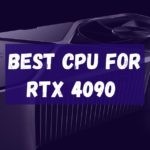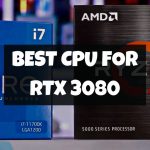
What is Crossfire? Have you been gaming since the mid-2000s and been taking down enemies in Call of Duty games while growing up, the term Crossfire won’t be new to you.
The first time I heard about this technology, it took me back to 2007, and all I could think of was camping with a sniper in one of the best Call of Duty games ever made, Modern Warfare while acing the Crossfire map.
However, nearly two years before the release of Modern Warfare, there was another Crossfire in the making.
This Crossfire wasn’t just another map in a generic FPS game, but it was AMD’s attempt to counter NVIDIA’s SLI technology.
Crossfire is AMDs hardware-based technology that is set to rival NVIDIA’s SLI technology, and here’s everything that you need to know about it.
What Is AMD CrossFire? How Does It Work?
Having more than one GPU running in your gaming rig was an idea known to many in the early 2000s, and there were multiple GPU companies working towards making this idea into a reality.
Having one powerful GPU in your computer was fun, but everyone knew having two would always make the computer perform better with AAA titles.
NVIDIA was the first to come out with their SLI technology that allowed the consumers to install more than one NVIDIA high-end graphics card in their computers; however, the technology had its limitations.
AMD followed, pursued, and introduced its Crossfire technology in 2005. Cross not only allowed the consumers to stack up against AMD graphics cards in their computers, but it also allowed them to have multiple graphics cards from different architectures working simultaneously to improve their gaming experience.
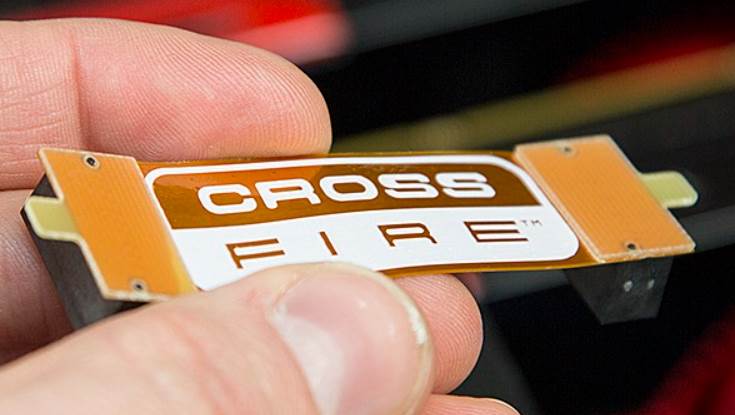
Ever since its first release in 2005, Crossfire technology has progressed a lot. During the early days, Crossfire had its limitations as well.
There were only a few motherboards available that supported a multi-GPU setup, let alone a Crossfire setup.
The best thing about AMD Crossfire in 2023 is that it can work with pretty much any of the motherboards available in the market.
Talking of the flexibility that this technology offers, you can even pair up your AMD graphics card with the integrated graphics card of your CPU.
Using AMD’s Crossfire technology, you can connect up to four graphics cards at the same time and do not necessarily need to have the same VRAM or the same architecture.
Previously, you would have to connect the graphics cards using a connecting bridge; however, much recently, the graphics cards that are being produced by AMD have built-in slots to ease the process of connecting them to each other.
Until now, we’ve established what is Crossfire, but how does this technology work? Before any further ado, let’s get into how the graphics cards work together.
They either offer you a “Split Frame Rendering” (SFR), or they offer you an “Alternate Frame Rendering” (AFR).
Split Frame Rendering
It could safely be assumed that if multiple GPUs are working together to render the graphics onto the screen, they’re probably dividing the workload amongst themselves. In split frame rendering, none of the graphics cards output the entire frame to the screen.

Depending on how many graphics cards are connected together, each graphics card gets its fair share of a portion of a frame to render.
With all of the pieces of frames combined from different graphics cards, the final frame is then output to the screen.
It’s not necessary that the workload gets divided equally amongst all of the graphics cards. In case there’re two graphics cards connected, one of them will have to do more work than the other.
That is, there’ll be a parent graphics card that’ll render more portion of the frame than the child graphics card.
Alternate Frame Rendering
While the frames are not being divided into portions and handed down to each graphics card to render their own piece, they are being rendered as a whole by each of the graphics cards attached.
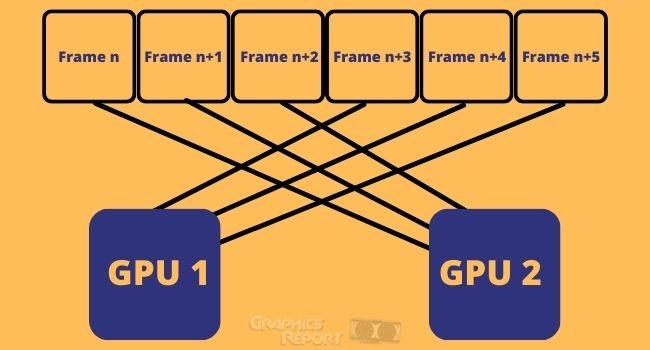
Graphics cards alternate between rendering frames. One frame is assigned to each GPU, and when the next frame comes in to be rendered, it gets assigned to the graphics card in the queue.
Just like SFR, there’s a parent card in AFR as well. Not every card has excess to the output, and they don’t render graphics directly to the screen.
Once the graphics have been rendered by secondary graphics cards, they all get sent to one parent graphics card that is then responsible for showing you the game image.
The Results And Gains
Both of these mechanisms work well; however, they both have their limitations. Using AFR for frames that are dependent on each other would be a train wreck.
On the other hand, GPUs have to do significantly more work while doing split frame rendering, and this can cause performance issues.
Over the years, it has been determined that SFR works better with DX11, whereas AFR works better with the more recent DX12.
Whatever the case might be, the GPUs and AMD drivers are smart enough to give you the perfect kind of rendering depending on the game title that you’re playing.
Testing AFR with dual AMD graphics cards of the same kind gave me almost 2 times better FPS while playing Dirt 3 as compared to a single graphics cards setup.
What Is Hybrid CrossFireX Technology?
While the Crossfire vs SLI battle continued amongst the gaming enthusiast willing to get every single ounce of FPS out of their machines, AMD decided to take another leap and introduce their CrossfireX technology.
CrossfireX technology wasn’t a whole lot different from the original Crossfire technology, except for a few performance tweaks.
But it did lay grounds for the CrossfireX Hybrid technology, and that’s where the ground started becoming shaky over at NVIDIA’s.
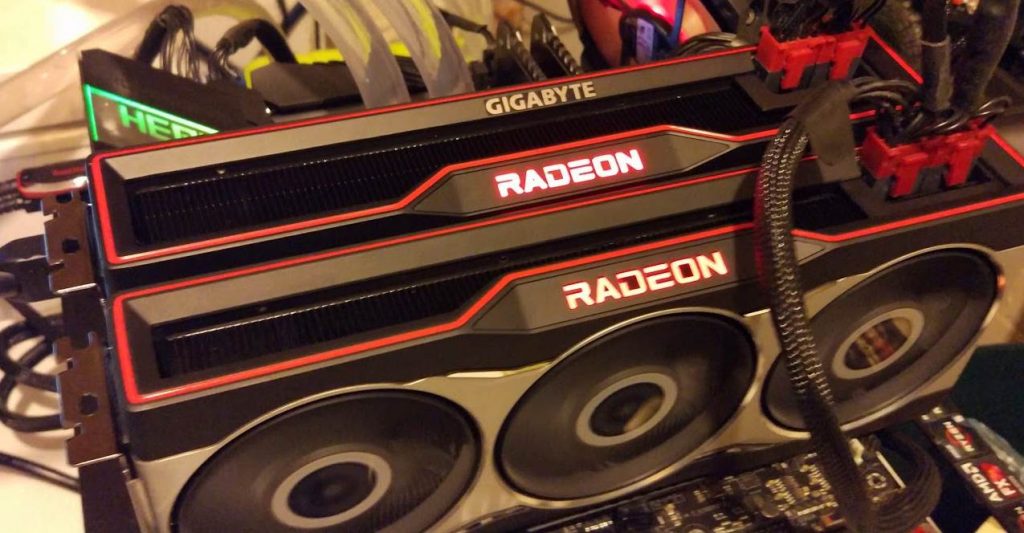
With the hybrid technology, AMD finally started targeting the consumers that were on a budget. With this hybrid technology, the true power of a multi-GPU setup started showing colors.
The hybrid technology allowed the users to pair up any two graphics cards, and by any graphics cards, I mean ANY graphics card.
With the Hybrid CrossfireX technology, you can now finally add a discrete graphics card along with a graphics card integrated with your CPU chipset.
If you happen to be on a budget and don’t have a lot of money set aside for a high-end graphics card, you can buy yourself a budget-friendly GPU and attach it to the integrated graphics card already present in your computer. This would give your gaming experience a significant boost.
But this is not where it all ends. If you’re not gaming and using your computer in your day-to-day life, you can always choose to run the integrated graphics card only to save power.
This is far better than having both of your power-hungry GPUs running all the time and adding to your electricity bills.
However, there are a few limitations to this technology as well. The only way the integrated and discrete graphics can work together is if both the chipset and the graphics card belong to the AMD family.
List Of CrossFire Compatible Cards
As exciting and promising AMD Crossfire seems it doesn’t support every single graphics card in the market. One thing’s for sure, the two graphics cards that are linked together need to be AMD graphics cards.
Still, not all of the AMD graphics cards support Crossfire. The list for the supported GPUs, however, is still quite long.
Below are all the graphics cards that can be linked together in 2–4-way Crossfire integration.
- Radeon RX Vega 64
- Radeon RX Vega 56
- Radeon RX 590
- Radeon RX 580
- Radeon RX 570
- Radeon RX 560
- Radeon RX 480
- Radeon RX 470
- Radeon RX 460
- Radeon R9 380X
- Radeon R9 295X2
- Radeon R9 290
- Radeon R9 280X
- Radeon R9 280
- Radeon R9 270X
- Radeon R9 270
- Radeon R7 265
- Radeon R7 260X
- Radeon R7 260
- Radeon R7 250X
- Radeon R7 250
- Radeon R7 240
- Radeon HD 7970
- Radeon HD 7950
- Radeon HD 7870
- Radeon HD 7850
- Radeon HD 7770
- Radeon HD 7750
- Radeon HD 6990
- Radeon HD 6970
- Radeon HD 6950
- Radeon HD 6870
- Radeon HD 6850
- Radeon HD 6790
- Radeon HD 6770
- Radeon HD 6750
- Radeon HD 5970
- Radeon HD 5870
- Radeon HD 5850
- Radeon HD 5830
- Radeon HD 5770
- Radeon HD 5750
- Radeon HD 4870 X2
- Radeon HD 4850 X2
- Radeon HD 4890
- Radeon HD 4870
- Radeon HD 4850
- Radeon HD 4830
- Radeon HD 4770
- Radeon HD 4670
- Radeon HD 4650
- Radeon HD 4550
- Radeon HD 4350
- Radeon HD 3870 X2
- Radeon HD 3870
- Radeon HD 3850 X2
- Radeon HD 3850
- Radeon HD 3650
- Radeon HD 3470
- Radeon HD 3450
CrossFire vs SLI: Similarities & Differences
It’s about time that I addressed the elephant in the room and let you in on some of the similarities and differences between the two leading technologies in multi-GPU support.
To begin with, there’s not a lot of difference between the two technologies, and they both offer the same functionality, allowing you to connect up to four GPUs together and have them working simultaneously with each other.
Both of the technologies make use of SFR and AFR technologies, with the latter being known as scissoring in the Crossfire world.
However, when it comes to connecting different GPUs together, there’re a few differences between the two, and in my opinion, Crossfire offers more flexibility.
You still cannot pair up an NVIDIA GPU with an AMD GPU using Crossfire, but you can still connect two AMD GPUs with different VRAMs.

When it comes to SLI, you can only pair up two same GPUs; however, they can be from different manufacturers. With Crossfire, they can be any two GPUs as long as they have the same architecture.
To add a cherry on top of the cake, Crossfire even allows you to connect discrete and integrated graphics cards together. Support which SLI lacks.
More reading: What Is AMD’s FidelityFX Super Resolution?
Talking of connecting two GPUs together, there’s a bit of a difference between the two here as well. SLI is a bit more demanding, whereas the Crossfire technology is slightly easygoing.
You’ll be needing an SLI connector to connect two NVIDIA GPUs, whereas, Crossfire can work with almost any motherboard as long as it has a PCI-Express slot.
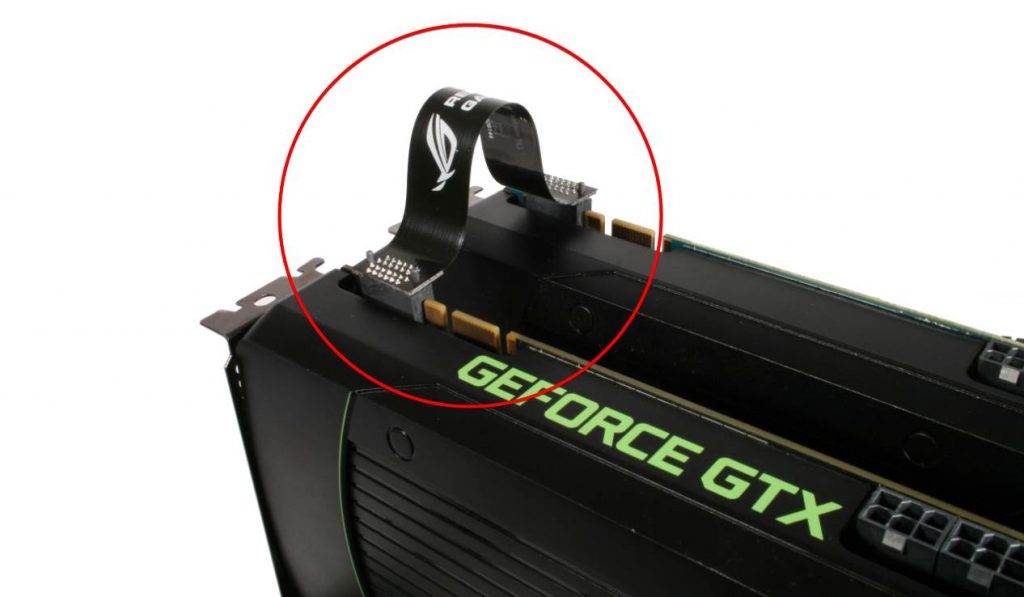
Hence, you won’t have to run to the store to buy connectors but simply buy another AMD GPU and plug it in, given that the PCI slot is present in almost all of the modern GPUs.
Moreover, Crossfire is compatible with almost all of the motherboards that you pick off from the shelf. SLI, on the other hand, requires you to have only the SLI-certified motherboards.
And, if you’re on a budget, this might not be a very economical solution since SLI-certified motherboards cost significantly more.
Moving on to the power supply demands of both technologies, Crossfire wins the SLI vs Crossfire battle here as well.
Its more recent Hybrid technology allows you to choose between running all or a single GPU. SLI will be going full send on all of the GPUs.
Hence, it could safely be assumed that running an SLI setup would cost you more than running a Crossfire setup.
While Crossfire proves itself to be more budget-friendly than SLI, it does have some drawbacks as well. It does not perform well if you’re playing the game in windowed mode.
SLI, on the other hand, does not have any limitations of such kind. You can enjoy gaming on both full-screen and windowed mode.
What Are Some Major Problems With Multi-GPU Use?
Irrespective of whether you’re using SLI or Crossfire technology, there are problems associated with having multiple GPUs in your rig.
To begin with, not all of the games offer support for multiple GPUs. In scenarios like these, the multi-GPU setup might backfire, giving you some poorly rendered graphics.
Even for games that are well optimized for a multi-GPU setup, SLI and Crossfire technologies can sometimes cause a glitch that is more commonly known as micro stuttering.
Other than that, a multi-GPU setup consumes more power. Two or more graphics cards working together will not only produce more heat and noise, but they’ll also draw more power.
If you’re already running a respectable PSU, you won’t have any troubles here; otherwise, you’ll have to spend some cash on getting a better PSU as well.
Lastly, a multi-GPU setup does not come cheap. Two low-end graphics cards will still cost you more than a single high-end graphics card that is already capable of running 4k games at 60-120 frames per second.
Is It Worth It To Use Both?
The question of running a multi-GPU setup in your computer is highly subjective. If you already have an APU in your computer and you want a respectable gaming experience by getting another budget-friendly graphics card, then Hybrid CrossfireX is the way to go.
The same goes for the discrete graphics cards as well. If there’s already a GPU installed in your PC, then you can get away with buying a similar GPU (maybe even one in used condition) and boost your PC performance.
However, if you’re building a PC from the ground up, then it’s better to just opt for a single high-end graphics card.
All of the recent high-end graphics cards work exceptionally well with all the AAA titles. And you’ll save yourself the trouble of micro stuttering as well.
My Final Thoughts On It!
SLI and Crossfire technologies were pretty revolutionary technologies when they first came out in the mid-2000s.
However, they fail to leave a mark in recent times. In fact, the term Crossfire hasn’t been heard of since 2017, when AMD decided to refer to this technology as simply mGPU.
SLI, on the other hand, hasn’t seen much innovation since it first came on in 2003 and still uses the old SLI connectors to connect multiple GPUs together.
The decline of both of these technologies is closely linked with the fact that the GPUs have become considerably powerful over the years, and there isn’t a need for multi-GPUs anymore.
Unless you want to put together two NVIDIA 3000 series or AMD RX 6800 cards, you’re better off with a single GPU setup.


